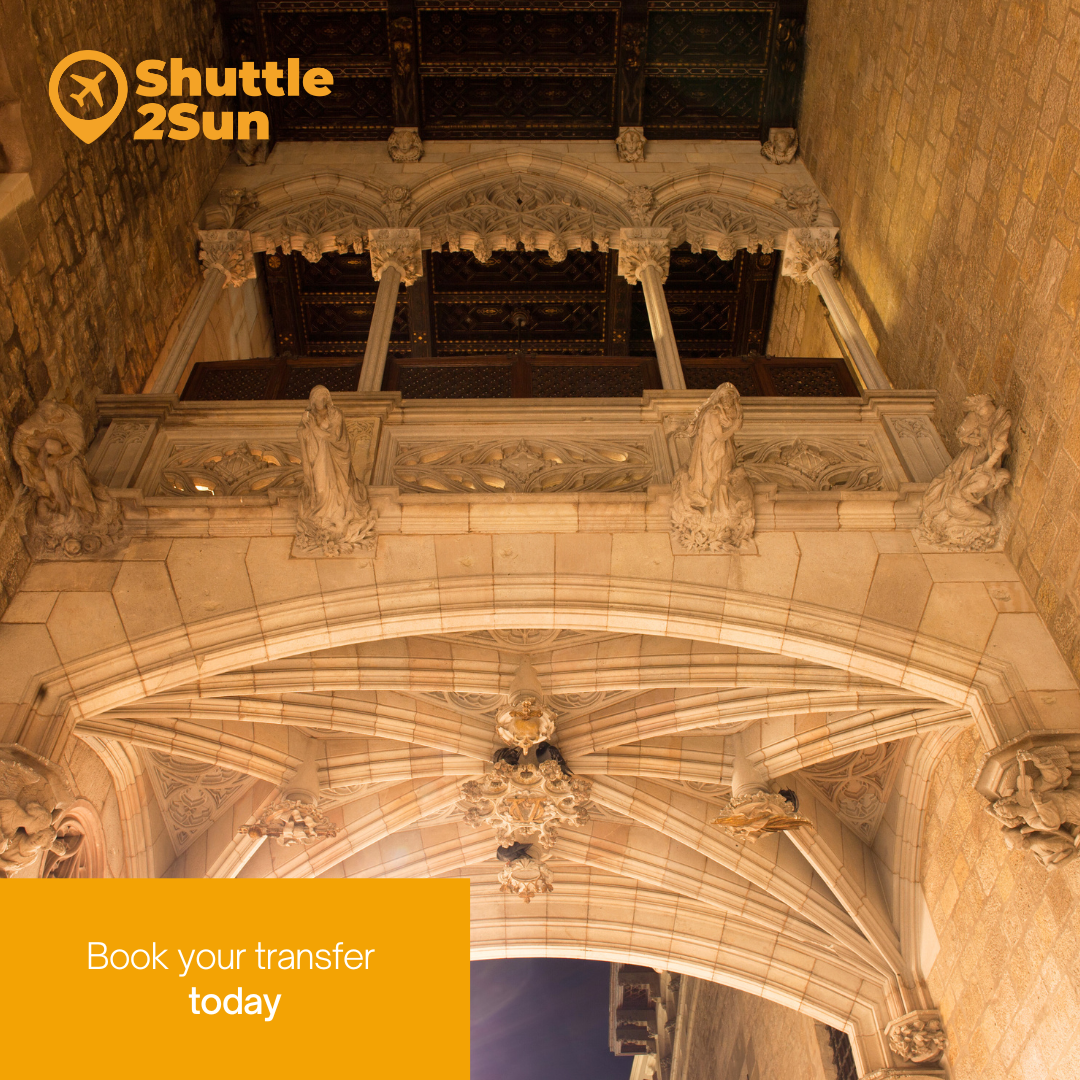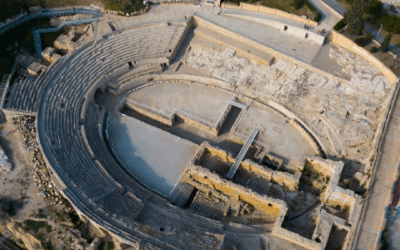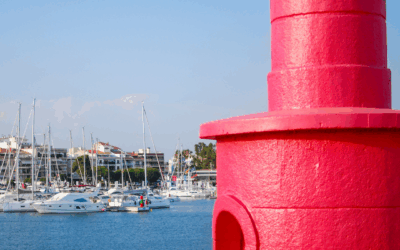Barcelona, the capital of Catalonia, is known for its rich history, modernist architecture and dynamic cultural life. Its streets, full of charm and quirkiness, reflect the city’s diverse and welcoming character. From majestic avenues to hidden alleyways, Barcelona offers visitors a myriad of nooks and crannies to discover. In this post, we’ll explore some of Barcelona’s most original and curious streets, each with its own charm and uniqueness.
If you want to explore them on your own feet, we recommend Shuttle2Sun‘s shared transfer services and private transfer services, low-cost and sustainable, so you can comfortably reach the Catalan capital from Barcelona airport, Barcelona port, Reus airport, Girona airport and Camp de Tarragona AVE train station. Remember that you can book your transfer up to 24 hours in advance.
Carrer del Bisbe, a great must-see
Carrer del Bisbe, located in the heart of the Gothic Quarter, is one of Barcelona‘s most emblematic streets. This narrow passageway connects Plaça Nova with Plaça Sant Jaume and is famous for its neo-Gothic bridge, known as the Pont del Bisbe.
This bridge, which connects the Casa dels Canonges with the Palau de la Generalitat, was designed by Joan Rubió i Bellver, a disciple of the renowned architect Antoni Gaudí, in 1928, and has become a photographic icon of the city.
In addition, this famous bridge has a most characteristic feature: a skull pierced by a dagger under the arch itself.
There are many legends surrounding this peculiarity, from the fact that if you make a wish under the bridge, it will come true, to the fact that if anyone dares to pull out the dagger, all the buildings in Barcelona will be demolished.
Carrer Petritxol, a mythical street due to its history
Carrer Petritxol, also in the Gothic Quarter, is narrow and pedestrianised, famous for its chocolate shops and art galleries. It is one of the best places in the city to enjoy a cup of hot chocolate with “churros”, a beloved tradition in Barcelona.

The walls of the buildings are decorated with tiles that tell the history of the street and the city, as well as the people who lived there, such as the writer and poet Àngel Guimerà. The street is also known for hosting the oldest art gallery in Barcelona, the Sala Parés, a space that has hosted exhibitions of the most famous Spanish painters of the 19th century, such as Pablo Picasso, Santiago Rusiñol and Ramón Casas, among many others.
Shuttle2Sun takes you to Barcelona, with its shared transfer services and private transfer services, low-cost and sustainable, from Barcelona airport, Barcelona port, Reus airport, Girona airport and Camp de Tarragona AVE train station.
Carrer de les Mosques, the narrowest street in Barcelona
Carrer de les Mosques is the narrowest street in Barcelona and one of the most curious. Also located in the Gothic Quarter, this tiny alleyway is so narrow that it barely allows one person to pass through at a time. Its peculiarity and its location in the heart of the old quarter make it an interesting visit for those who want to explore all the nooks and crannies of the city. At present, the street itself is not accessible, but it can be seen from the beginning and end of this small street, from the adjacent streets, Carrer Montcada and Carrer dels Flassaders.
Its name comes from the fact that, due to its narrowness and the heat in summer, many flies accumulated in this small space, as this street had warehouses where goods from the Born and Santa Caterina markets were left, and rubbish accumulated.

Passatge de Tubella, a small village in a big city
Passatge de Tubella, located in Les Corts district, is a charming and little-known place that preserves the atmosphere of an old village in the middle of the city. This pedestrian passageway is full of low, colourful houses with front gardens, and offers a quiet, picturesque atmosphere, reminiscent of the English style.
These single-family houses, designed by the architect Antoni Pons, were built in the 1920s to house the neighbourhood’s factory workers.
Today, up to 18 homes remain, protected as an Asset of Local Interest. As a detail, if you visit this passage, look at the houses at the ends, where you can find out the year they were built.
Another corner that escapes from the hustle and bustle of the city is Carrer d’Aiguafreda, a narrow street lined with small houses, which still preserves the old washing places used by the washerwomen of Horta.
The street of “tapas”
One of the great attractions of Spanish cuisine are the “tapas”, small portions of food served in bars accompanied by a beer, soft drink or wine. For example, there are the famous “patatas bravas”, “calamares a la romana”, fried baby squid, homemade croquettes and “ensaladilla rusa”, among many others.
Barcelona even has a street that has become popular as the street of “tapas”: Carrer de Blai, located in the Poble Sec neighbourhood. This pedestrianised street is full of bars that serve “tapas” and “pinchos”, offering a wide variety of small bites at very affordable prices.
The comic strip characters Mortadelo and Filemón on Passeig de Gràcia
On Passeig de Gràcia, one of the busiest and most visited avenues in Barcelona, there are some very special traffic lights: the Mortadelo and Filemón traffic lights. These are decorated with images of the famous comic strip characters created by Francisco Ibáñez and add a touch of humour and creativity to one of the city’s main thoroughfares.
This original traffic light can also be found at the junction of Carrer del Treball and Carrer del Concili de Trent. Both are a perfect example of how Barcelona integrates art and popular culture into its urban landscape.
Let yourself fall in love with Barcelona’s most original streets! Don’t forget to book your transfer in advance. Remember that you have at your disposal Shuttle2Sun‘s shared transfer services and private transfer services, low-cost and sustainable, from Barcelona Airport, Barcelona Port, Reus Airport, Girona Airport and Camp de Tarragona AVE train station. Remember that you can book your transfer up to 24 hours in advance.



